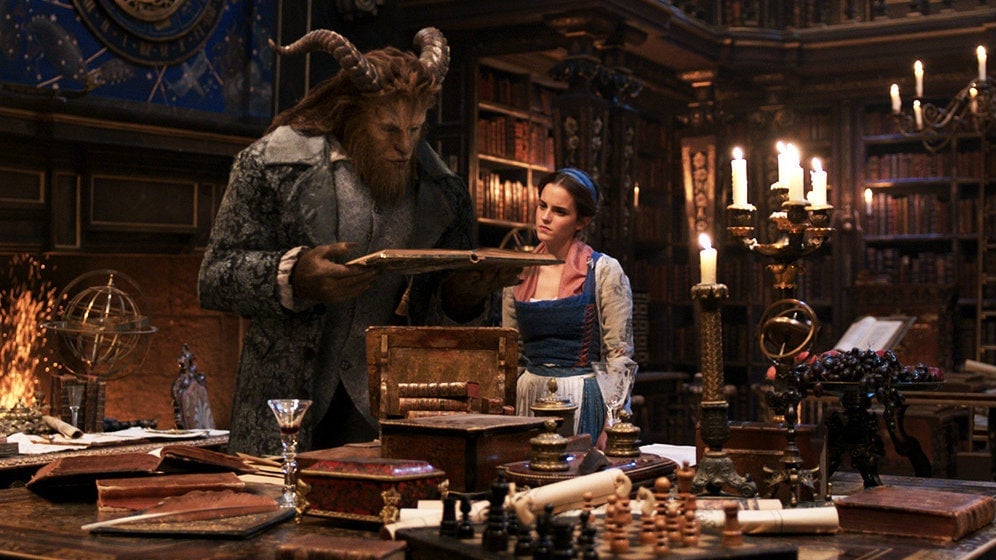“Beauty and the Beast” is a pretty film disguising the ugly beast of misogyny
The actress Emma Watson has made a point of portraying her latest movie, Disney’s Beauty and the Beast, as feminist film. Watson told Vanity Fair that she worked with Disney to update her character for the live-action version of its 1991 cartoon: In this latest version, Belle wears more practical clothing, is an inventor in her own right (rather than her father’s assistant), and often asserts her love of reading. Watson even asked renowned feminist writer Gloria Steinem to watch the film and make sure it aligned with feminist principles.


The actress Emma Watson has made a point of portraying her latest movie, Disney’s Beauty and the Beast, as feminist film. Watson told Vanity Fair that she worked with Disney to update her character for the live-action version of its 1991 cartoon: In this latest version, Belle wears more practical clothing, is an inventor in her own right (rather than her father’s assistant), and often asserts her love of reading. Watson even asked renowned feminist writer Gloria Steinem to watch the film and make sure it aligned with feminist principles.
But let’s be clear: Beauty and the Beast is not a feminist movie. These nods to feminism mean diddlysquat for gender equality. I don’t care that the protagonist is a woman, nor that she’s played by one of Hollywood’s leading feminists.
The feminist veneer aligns with Watson’s ideology, but it also has the handy benefit of harnessing the growing marketing appeal of gender equality. And lo, there are dozens of headlines connecting Beauty and the Beast with feminism, each doing remarkable twists to excuse the inexcusable fact that sweet, beautiful Belle is being held captive by an immoral beast and shows clear signs of Stockholm Syndrome by falling in love with him.
The original fairytale is ultimately the story of a kidnapping, and one that emphasizes the importance of physical looks. That alone disqualifies the film from being truly feminist. There are more sexist movies out there, to be sure. But what makes Beauty and the Beast particularly egregious is the insincere and flimsy “feminist” dressing it comes in. Belle wears riding boots and invents a washing machine. Ergo, she’s presented as an “activist.”
Such additions aren’t real feminism, but rather a clever disguise, and one that will allow moviemakers to continue churning out under-developed female characters and sexist storylines for as long as we let them.
This isn’t the first time Beauty and the Beast has been presented as feminist. (Even though the original story portrays not only an ugly beast but also a stupid one, whom Belle ultimately agrees to stay with out of gratitude for the imprisonment hospitality.) In 1991, Linda Woolverton, who wrote the animated film, made a point of creating a character more well-rounded than the typical damsel in distress. That’s how Belle came to enjoy reading in the first place. But that change didn’t make the story feminist then, and it certainly doesn’t now.
I don’t doubt the good intentions of those who’ve tried to thrust Belle toward feminism, but I do know that the result is just the re-packaged tale of yet another beautiful woman’s docility. It remains a troubling story about the need for women to submit to their assigned husbands, twisted into a romance to make it seem palatable.
Disney’s Beauty and the Beast is a symptom of Hollywood’s very real problem with women. In 2016, just 29% of protagonists and 7% of directors were women. While men are allowed to be flawed heroes, or even antiheroes, women are generally afforded no such depth or nuance. Portrayals of women on screen are still so limited that female characters who do behave “badly,” like those in HBO’s Girls, are criticized for their immoral behavior rather than appreciated for their depiction of humanity.
Hollywood knows it has a sexism problem, and a wave of marketing has sought to highlight examples of strong woman characters among its offerings. But presenting any film with a female protagonist as feminist—regardless of the plot or nature of the character—reeks of using feminism as a mere selling point. And the implications are dangerous. Just as Ivanka Trump’s half-hearted feminism serves as a shield for her father’s misogynistic policies, dressing sexist movies in feminist clothing only allows Hollywood to further indulge in its unhealthy portrayals of women.
If we want real gender equality, let’s demand complex female characters and stories, not simply updated versions of sexist tropes. After all, misogyny has always had the remarkable ability to adapt across political ideologies, countries, and centuries, by changing its face while retaining its key sexist principles. It’s a tale as old as time.